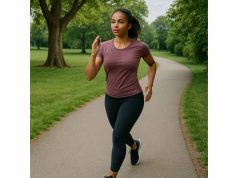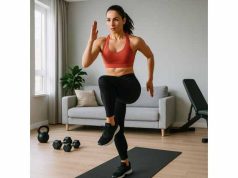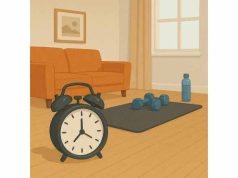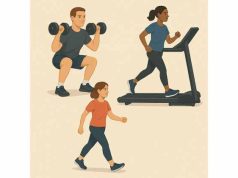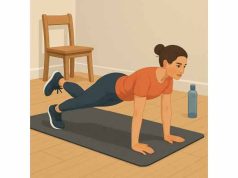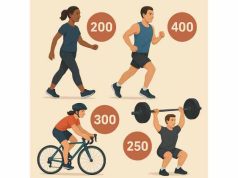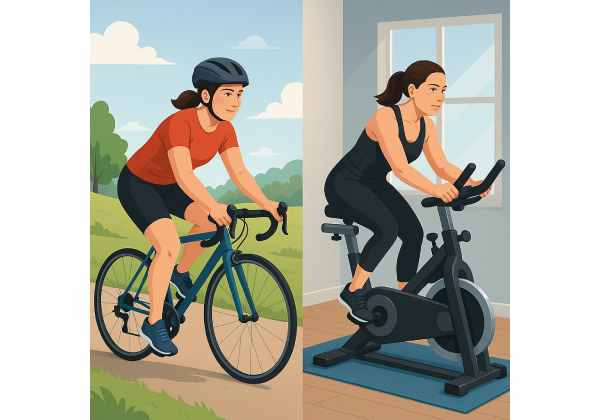
Cycling is one of the most joint-friendly ways to create a meaningful calorie deficit while improving cardiovascular fitness and leg strength. This guide turns that idea into a practical weekly plan you can do on a bike trainer, spin bike, or outside on roads and paths. You will learn how fat loss happens on the bike, how to set targets, and which sessions to run each week. If you also strength train or walk a lot, see our companion guide on exercise for weight loss guidance to coordinate your schedule.
Table of Contents
- Why cycling works for fat loss
- Set goals and track progress
- Weekly training plan templates
- Indoor workouts that deliver
- Outdoor rides and tactics
- Fueling for fat loss and performance
- Recovery, fit and troubleshooting
- Frequently Asked Questions
Why cycling works for fat loss
Cycling is an aerobic sport that scales to your fitness: you choose gears and cadence to match your current level. That makes it ideal for longer sessions that steadily raise total energy expenditure with minimal impact on joints. When paired with modest nutrition changes, these sessions help you maintain a consistent calorie deficit—the central driver of weight loss—without feeling wrecked between workouts.
On the bike, you burn calories in proportion to intensity, duration, body mass, wind resistance, and terrain. Two principles matter most:
- Volume wins first. Steady, moderate rides (often called “endurance” or Zone 2) accumulate calories with low stress. For weight loss, that’s your weekly foundation.
- Intensity sprinkles on top. Shorter interval sessions raise your ceiling, improve cycling economy, and keep training time efficient. The after-effect (excess post-exercise oxygen consumption) is real but modest; it supports, but does not replace, total weekly volume.
Indoor and outdoor options serve different roles. Indoors you can control temperature, resistance, and cadence precisely—great for interval repeatability and busy schedules. Outdoors encourages longer, more engaging rides; wind and hills naturally vary intensity, which helps build stamina and skills. The best plan usually blends both so weather, daylight, and motivation never dictate whether you train.
Weight loss that lasts is gradual. Aim for about 0.25–0.75% of body weight per week. Faster rates increase fatigue, hunger, and muscle loss. Use cycling to preserve fitness and muscle while your diet sets the deficit. If you are new to exercise, start with shorter rides, prioritize comfort (saddle, shorts, posture), and build time first before adding hard efforts.
For a refresher on safe pace, realistic timelines, and non-exercise factors like sleep and stress, see our safe weight loss basics. That hub frames cycling within a bigger, sustainable approach.
Key takeaways
- Build most minutes at easy–moderate intensity you can hold while talking.
- Add one focused interval day and (optionally) a short skills or cadence session.
- Use both indoor and outdoor settings to stay consistent across seasons.
Set goals and track progress
Clear targets keep training purposeful and help you adjust when progress stalls. Use these four dials:
- Time on the bike (primary). Track weekly minutes, not just miles. Minutes scale better across routes and weather. Most people do well between 150 and 300 minutes per week, split across 3–5 rides.
- Intensity guidance. Choose one tool you can stick with:
- Rate of Perceived Exertion (RPE): 2–3/10 for easy spins, 4–5/10 for endurance, 7–9/10 for intervals.
- Heart rate: Estimate max as 208 − (0.7 × age) if you lack a tested value. Endurance rides typically sit around 60–70% of HRmax, with intervals up to 85–95% for short efforts.
- Power (watts): If you have a meter, set zones from a 20-minute hard test or ramp test.
- Weight and girth. Weigh 1–2 times per week at the same time of day; measure waist or hip circumference every 2–4 weeks. Look for trend lines, not daily swings.
- Non-scale progress. Note lower resting heart rate, easier hills, improved sleep, and consistent appetite control.
If you prefer heart-rate guidance for aerobic work, review our primer on Zone 2 heart rate to set a sustainable endurance pace without drifting too hard.
Setting a smart weekly goal
- New or returning riders: start at 90–120 minutes/week across 3 rides (e.g., 30–40 minutes each). Add 10–20 minutes total every week or two.
- Intermediate riders: target 180–240 minutes/week across 4 rides: endurance, intervals, skills/cadence, and a longer ride.
- Experienced riders: 240–360 minutes/week, maintaining 1–2 quality sessions and a long ride, with one recovery day.
Tracking adherence beats chasing numbers. Set a floor you can always hit—even on stressful weeks—and a ceiling you rarely exceed. Over time, your “floor” rises as fitness improves and your schedule solidifies.
Progress checkpoints
- Every 2–3 weeks: repeat a standard route or indoor session at the same RPE and compare time or heart rate.
- Every 4–6 weeks: retest a 10–20-minute best effort or ramp test to update zones.
- Monthly: reassess saddle comfort, handlebar height, and tire pressure. Small comfort gains lead to longer, more frequent rides.
Weekly training plan templates
Below are plug-and-play schedules you can run indoors, outdoors, or mixed. Each week includes an endurance base, one interval day, and one longer ride. Add optional skills/cadence work if time allows. Swap days as needed; keep at least one true rest day.
Beginner (3 days • ~120–150 min/week)
- Day 1 – Endurance 35–45 min (RPE 4/10): Settle at a conversational pace. Include 2 × 5-minute high-cadence spins (90–100+ rpm) with easy pedaling between.
- Day 2 – Intervals 20–30 min (RPE 7–8/10 on efforts): 8–10 × 30 seconds hard / 90 seconds easy. Warm up and cool down 5 minutes each.
- Day 3 – Longer ride 45–60 min (RPE 4–5/10): Stay steady. If outdoors, choose gentle rollers; if inside, use a “tempo” profile without spikes.
Intermediate (4 days • ~180–240 min/week)
- Day 1 – Endurance 45–60 min: Keep HR in aerobic range; finish with 4 × 1-minute fast spins.
- Day 2 – Sweet spot 35–45 min: 3 × 6–8 minutes at RPE 6–7/10 with 3 minutes easy between.
- Day 3 – Skills 20–30 min: Single-leg drills (indoors), standing climbs, cornering practice (outdoors), or commuting at easy pace.
- Day 4 – Long ride 60–90 min: Smooth, steady. Fuel a little (see nutrition section) to preserve quality.
Experienced (5 days • ~240–330 min/week)
- Day 1 – Endurance 60 min.
- Day 2 – Threshold repeats 45–60 min: 2–3 × 8–12 minutes at RPE 7–8/10 with equal easy time.
- Day 3 – Recovery 30 min: Very easy spin; legs should feel better after.
- Day 4 – VO₂ microbursts 35–45 min: 2 sets of 10 × 30 seconds hard / 30 seconds easy; 5 minutes easy between sets.
- Day 5 – Long ride 90–120 min: Keep most time aerobic; add a few relaxed hills late if you feel strong.
To choose where harder work belongs in your week, skim our comparison of HIIT vs steady efforts. Use intervals when time is tight; expand steady rides when you can.
Periodization in four-week blocks
- Weeks 1–3: Build time first (+10–15%/week at most); keep only one intense day if you feel beat up.
- Week 4: Cut volume by ~30–40% and reduce intensity to absorb gains.
- Repeat with slightly higher baselines or longer long rides.
Success signals
- You finish rides feeling energized, not drained.
- You can hold an easy conversation on endurance days.
- Your legs “bounce back” within 24–36 hours after interval days.
Indoor workouts that deliver
Indoor riding makes consistency easy: no traffic, no weather, and precise control. Use these proven formats to get results in short windows.
Time-crunched builds (20–35 minutes total)
- Tabata-style starter (20–25 minutes): After a 5-minute warm-up, do 6–8 × 20 seconds hard / 100 seconds easy. Cool down 5 minutes. Great first step into intensity.
- Ladder bursts (25–30 minutes): 1 minute hard / 1 minute easy, then 90 seconds hard / 90 seconds easy, 2 minutes hard / 2 minutes easy; repeat the ladder back down. Keep cadence brisk.
If you want more short, focused options, pick from our 20-minute HIIT templates and rotate two or three favorites.
Endurance builders (30–60 minutes total)
- Tempo with cadence play (40–50 minutes): 3 × 8 minutes at RPE 6/10 with 3 minutes easy; during each 8-minute piece, ride 2 minutes at 85–90 rpm, 2 minutes 95–100 rpm, repeat.
- Over-unders (45–55 minutes): 3 × 10 minutes alternating 2 minutes at strong tempo (RPE ~6.5/10) and 1 minute just below threshold (RPE 7.5/10). This teaches you to clear mild fatigue without spiking HR.
Comfort and setup tips
- Use a strong fan and a small towel; heat raises heart rate and lowers power output.
- Set saddle height so your knee has a slight bend at the bottom of the stroke; level the saddle to reduce pressure.
- Consider padded shorts and chamois cream for longer sessions.
- If you lack a power meter, track cadence and heart rate plus RPE. Consistent numbers at the same RPE mean real progress.
Motivation tricks
- Put the bike where it is impossible to ignore: near your work desk or TV.
- Pair sessions with a podcast or music playlist reserved only for training.
- Keep the trainer always set up so mounting the bike is one decision, not five.
Outdoor rides and tactics
Outdoor riding adds terrain, skills, and scenery that make longer rides practical—and fun. Use these tactics to turn everyday routes into fat-loss gold.
Route design
- Favor loop routes with light traffic and few stops. Continuous pedaling beats start-stop city riding.
- Use rolling hills for natural “progression” intervals: climb steady, recover on descents.
- If possible, include a gentle climb near the end for a confidence-boosting finish.
Skill layers that increase speed at the same effort
- Cornering and braking: Brake before the turn, release through the apex, and pedal out smoothly.
- Cadence management: Shift early to keep cadence 80–95 rpm on flats, 70–85 rpm on moderate climbs.
- Seated climbing: Relax your upper body; hold the hoods; keep elbows soft. Stand only to change muscle recruitment or on steep ramps.
Low-friction wins for heavier riders
- Inflate tires to the middle of the recommended range (check sidewall), not the max; comfort reduces bouncing and energy loss.
- Keep the chain cleaned and lightly lubricated; a gritty drivetrain can cost noticeable watts.
- Wear layers you can unzip on climbs and close on descents to manage temperature.
Everyday volume without “training”
- Commute by bike 1–3 days per week at easy pace.
- Add a 10–15-minute add-on loop before returning home.
- Ride to errands within 3–5 km when practical. Lock and lights are must-haves.
To better gauge how terrain, speed, and rider size affect energy use, review our primer on calorie burn estimates and use it to set expectations for long rides.
Safety checklist
- Use front and rear lights day and night.
- Assume drivers do not see you; ride predictably and signal early.
- Obey local traffic laws; ride with a buddy when possible.
Fueling for fat loss and performance
Nutrition determines your deficit; smart fueling lets you train well while losing weight. The goal is not to ride depleted. It is to target your calories where they matter most and keep hunger steady.
Daily anchors
- Protein: ~1.6–2.2 g/kg body weight per day. Spread across 3–4 meals.
- Carbohydrates: Scale to training. More on interval or long days, less on recovery.
- Fats: Fill the remainder with minimally processed sources you enjoy.
- Hydration: 2–3 liters/day baseline; during rides, sip 500–750 ml per hour depending on heat.
Before, during, after
- Under 60 minutes easy: Water is fine; optionally a small snack if you are hungry.
- 60–90 minutes steady or intervals: Take 20–30 g carbohydrate during (chews, drink mix, banana), plus 10–20 g protein within 1–2 hours after.
- 90+ minutes: Start fueling early (30–60 g carb/hour) to protect quality late in the ride and reduce post-ride overeating.
Curious about training with minimal fuel? It can be done, but it is not for everyone. Read our balanced overview of fasted cardio to decide when, and if, it fits your plan.
Hunger management
- Anchor meals around lean protein + fiber (e.g., beans, vegetables, whole grains).
- Pre-load long rides with a moderate meal (carb + protein) 2–3 hours prior so you are not ravenous afterward.
- Keep post-ride snacks planned and portioned. A simple yogurt bowl or egg-and-toast beats an unplanned pantry raid.
Alcohol and weekends
- Alcohol suppresses fat oxidation and sleep quality. If you drink, keep it small and away from key training days.
- Social rides are great; pace the first hour conservatively so you can finish strong and skip the “bonk” that triggers overeating.
Recovery, fit and troubleshooting
Consistency is the superpower. Recovery habits make that possible.
Sleep and stress
- Aim for 7–9 hours of sleep. Increase by ~30 minutes on weeks with a long ride or added intervals.
- Use easy spins or walks on high-stress days. Training should reduce stress, not add to it.
Bike fit essentials
- Saddle height: At the bottom of the stroke, your knee should have a small bend (roughly 25–35 degrees). Too low stresses the knees; too high causes hip rocking.
- Reach and handlebar height: You should hold the bars without shrugging or locking elbows. Tingling hands often mean too much weight forward.
- Saddle comfort: Wider or pressure-relief designs can help. Good shorts matter more than any accessory.
Common aches and fixes
- Front-of-knee pain: Reduce gear load (spin faster), recheck saddle height, trim interval volume.
- Low back tightness: Add core work 2–3 times per week (planks, dead bugs). Warm up with gentle hip mobility.
- Hot spots on feet: Loosen straps slightly; consider supportive insoles; vary hand and saddle positions on long rides.
Plateaus
- Nudge weekly minutes up by 10–15%.
- Swap a tempo day for sweet spot or short hill repeats.
- Tighten calories on rest days rather than cutting fuel during key rides.
When to hold or seek help
- Sharp joint pain, numbness that persists, or chest pain are stop signs. Speak with a qualified clinician before returning.
- If fatigue lingers more than 72 hours, reduce intensity for a week and focus on sleep and nutrition.
Frequently Asked Questions
How many times per week should I cycle to lose weight?
Three to five rides per week works for most people. Build to 150–300 minutes total, with one interval session, one long ride, and the rest easy endurance. Keep at least one full rest day. If life is busy, do shorter indoor sessions and protect your long ride.
Is indoor cycling as effective as outdoor riding for fat loss?
Yes. Indoors offers precise control and no weather gaps; outdoors encourages longer, engaging rides. Combine both. Let steady indoor sessions handle intervals and use outdoor rides for weekly volume. The best plan is the one you can repeat for months without burnout.
What heart rate zone burns the most fat?
Easy to moderate aerobic work—often called Zone 2—maximizes fat use per minute and supports long durations. That does not mean intervals are useless: harder sessions raise fitness so you burn more at every intensity. Blend mostly Zone 2 with one higher-intensity day weekly.
How fast will I lose weight if I start cycling?
A steady, realistic pace is about 0.25–0.75% of body weight per week, assuming a modest calorie deficit and consistent training. Your rate depends on starting size, diet, sleep, and stress. Faster loss increases muscle risk and hunger; slower, sustainable progress beats extremes.
Do I need a power meter to follow this plan?
No. Use RPE and heart rate to guide effort. A power meter helps quantify gains and set precise intervals, but it is optional. If you ride indoors on a smart trainer, its estimated power is enough to structure workouts and track trends alongside RPE.
What should I eat before and after rides?
For rides under an hour, water is usually enough. For longer or harder sessions, eat a small carb-focused meal two to three hours prior, and take 20–60 g carbs per hour while riding. Afterward, have 20–30 g protein plus some carbs to support recovery and appetite control.
References
- Aerobic Exercise and Weight Loss in Adults: A Systematic Review and Dose-Response Meta-Analysis 2024 (Systematic Review)
- High-intensity interval training is not superior to continuous aerobic training in reducing body fat: A systematic review and meta-analysis of randomized clinical trials 2023 (Systematic Review)
- WHO guidelines on physical activity and sedentary behaviour: at a glance 2021 (Guideline)
- Carbohydrates and Endurance Exercise: A Narrative Review of a Food First Approach 2023 (Review)
- Effect of Sleep Extension on Objectively Assessed Energy Intake Among Adults With Overweight in Real-life Settings: A Randomized Clinical Trial 2022 (RCT)
Medical disclaimer
This guide is educational and not a substitute for personalized medical advice. Consult a qualified healthcare professional before starting or changing an exercise or nutrition plan, especially if you have cardiovascular, metabolic, or orthopedic conditions, are pregnant, or take medications that affect heart rate or hydration.
Keep learning and share
If this plan helped, consider sharing it with a friend or training partner. You can also follow us on Facebook or X to get future training guides and updates at your pace. We appreciate thoughtful questions and feedback to keep improving these resources.

